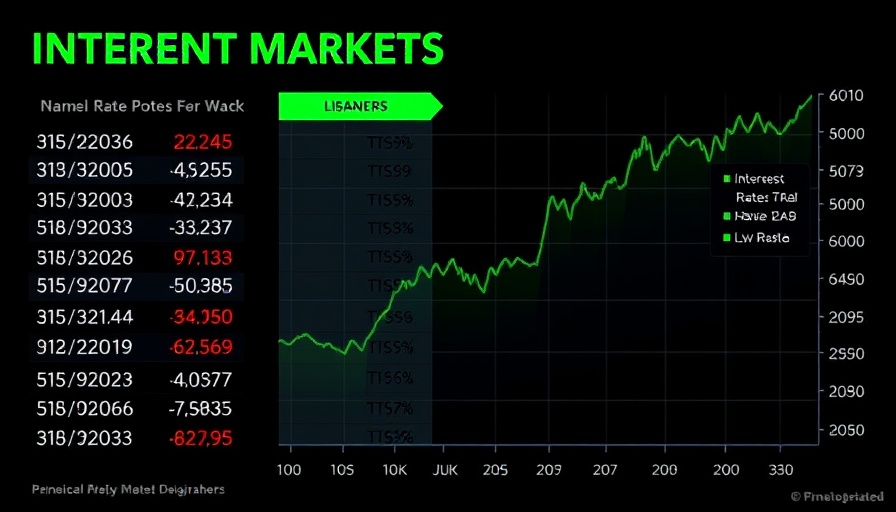
The Calm After the Storm: Understanding Recent Market Trends
As we wrap up another week in the financial markets, it's worth taking a moment to reflect on what we saw from the housing and mortgage sectors. The week may not have been filled with the usual excitement, but for those keeping an eye on mortgage-backed securities (MBS) and interest rates, this can be a welcome calm. Recent weeks presented higher volatility, so a quieter week might just signify a necessary pause for breath.
Why Dovish Comments Mattered
One of the notable occurrences this week was the dovish tone expressed by the Federal Reserve’s Waller. This played a key role in calming fears about rising rates. His comments reassured investors that the Fed remains committed to supporting economic growth, which directly influences mortgage rates. Interest rates have the remarkable ability to impact everyday Americans, particularly those considering home purchases or refinancing their current mortgages.
Interpreting Recent Economic Data
The economic data released this week presented mixed signals. The Philadelphia Fed Index was recorded at -4.0, aligning with the previous month but falling short of forecasts. This suggests that regional manufacturing continues to face challenges. Meanwhile, the Leading Economic Index was flat at -0.1, which indicates stagnation in economic growth and could prolong the existing low-rate environment.
Comparing Global Influences
Just as important as domestic factors are the waves coming from overseas markets. This week's performance in European bonds helped bolster US bonds, demonstrating how interconnected our financial systems are. International trends often set the stage, creating ripples that affect local markets, making it essential for investors to stay informed about global contexts.
Implications for Homebuyers and Buyers
The current market conditions present clear implications for home buyers and homeowners looking to refinance. With rates hovering near their lower ranges, potential buyers have a unique opportunity to secure favorable mortgage conditions. Those who have been sitting on the fence may find that now is a great time to explore their options. The stability in the MBS market might ease fears for those considering big financial commitments, leading to more confident purchasing decisions.
What Lies Ahead in Mortgage Markets?
Looking forward, predictions suggest that the market may remain stable in the near future. With economic indicators like the Leading Economic Index hovering around stagnation, it might lead to sustained lower rates for some time. Analysts advise monitoring updates from the Fed closely; any signals of tightening could shift the dynamic significantly for buyers and investors alike. Therefore, staying informed and proactive will be essential for navigating the coming months.
Make Informed Decisions in Uncertain Times
In this era of fluctuating economic indicators, one thing stands clear: knowledge is power. Whether you are a seasoned investor or a first-time homebuyer, understanding how various factors influence mortgage rates can lead to better financial choices. It's crucial to remain educated and adaptive to the changes presented by the market.
As you navigate your financial journey, consider how current events could shape your decisions. Engage with your financial advisor or explore resources that can offer insight into loan options and what may suit your needs best. Remember, being proactive in uncertain times can make all the difference.
 Add Row
Add Row  Add
Add 




Write A Comment